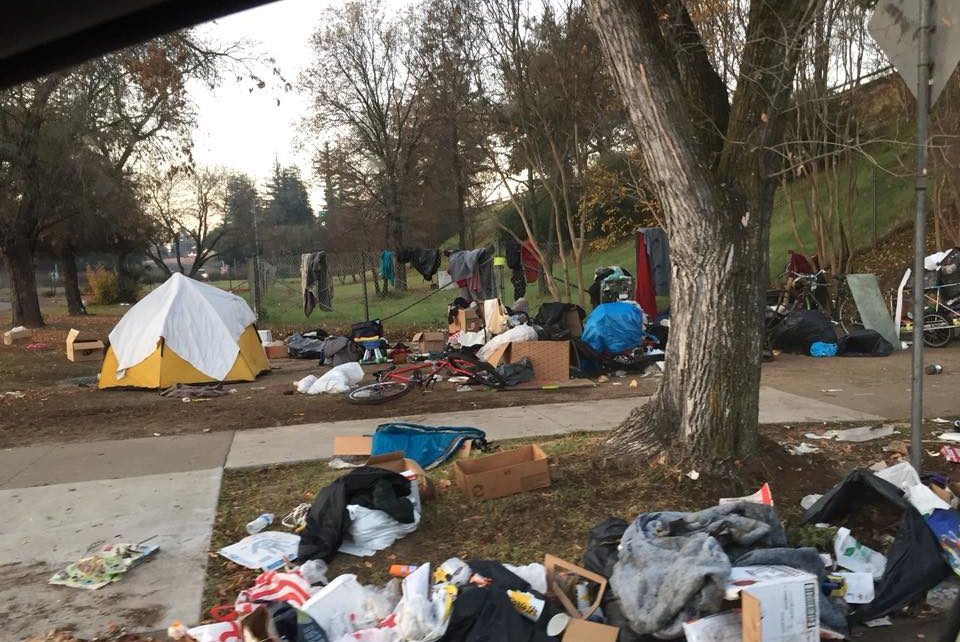
Sacramento homeless. (Photo: Katy Grimes for California Globe)
Two Sacramento Safe Ground Sites Have 23% ‘Success Rate’ in Getting Homeless off the Street
A recent homeless camp site clearing took place so Caltrans crews could clean up used needles and human waste
By Katy Grimes, October 7, 2021 3:42 pm
The two “Safe Ground” sites near the downtown Sacramento neighborhood of Land Park have had a 23% success rate in getting people off the street over the past 6 months, according to the City of Sacramento.
The city is calling the 23% rate a “success.”
The City of Sacramento explains on its website:
The City of Sacramento opened its first “safe ground” sites six months ago to provide unsheltered residents with a safer, cleaner place to be. What have the outcomes been so far?
The safe camping/parking site at near W and Sixth streets and the safe parking site on Front Street near Miller Park were not designed to be long-term solutions for unsheltered residents, said Bridgette Dean, director of the City’s Department of Community Response.
Instead, the sites offer a safe place for people to stay either in a tent or a vehicle while accessing other resources that can help them escape the cycle of homelessness.
To date, the two sites have served approximately 370 people. Staff at these sites have been able to help 85 people move on into better housing options, reuniting some with family and connecting others to housing resources, Dean said.
Since they opened, the sites — which are considered “low barrier,” in that they accept people as they are — have remained full.
“Safe ground is not intended to be a long-term solution for anyone,” Dean said. “In addition to food, water and shelter, the sites offer stability, safety, security, sanitation and access to services and resources that can help people get into more permanent housing.”
“Low barrier” does not mean “they accept people as they are.” Low barrier shelters are popular with the homeless because there is no accountability: no sobriety requirement, no treatment requirement. They are allowed to continue to use heroin and meth – the two drugs of choice in Sacramento’s homeless community.
Local residents in the adjacent neighborhood had plenty to say about the 23% “success” rate:
- so that’s an F- right? Therefore, a 77% failure rate? If I scored 23% on an “experiment” I would be given a grade of F-!!
- Calling a Shantytown a “Safe Ground” is right up there with the new pronouns … and used by the same out of touch with reality woke folk.
- 23% success? A business would shut down with those numbers.
- I’d like to know how many of those 370 people are now employed. Where is the rest of the data? If 85 were helped into other housing/families, what about the other 285? Where are they? Still in the shelter or did they get booted or walk out? We are getting more and more of them on Potrero. They gather outside the Dollar Tree most evenings, then disperse, leaving trash all over.
To get an idea of the magnitude of Sacramento’s drug-addicted homeless problem, facilitated by the City, State Caltrans crews cleared a sizable homeless camp along 29th Street between F and H streets Tuesday, and the homeless “campers” just moved a block away.
City officials call the drug-addicted homeless “campers,” “unsheltered” and “unhoused,” to justify the city’s failed “housing first” policy, rather than requiring a “treatment first” policy – then City officials could call the drug-addicted homeless “unsober,” “junkies,” “schizophrenic” and “psychotic.”
No one makes money on treating drug addicted, mentally-ill homeless people, but plenty of big donors to the City Council make money building “affordable housing” and renovating flop-houses, apartments and motels.
“The clearing took place so crews could clean up used needles and human waste on the property, along 29th Street between F and H streets,” the Sacramento Bee reported. “Many of the roughly one dozen unhoused people who were cleared from the lot moved their tents a block north, to a dirt lot along 29th Street between E and F streets.”
Last week, Caltrans cleared a homeless camp along Ninth Street near W Street under a freeway overpass which separates two downtown neighborhoods. After the cleanup, City Councilwoman Katie Valenzuela said she got calls from nearby residents complaining about tents popping up in the adjacent Southside Park neighborhood. Valenzuela’s knee jerk reaction was to criticize Caltrans for not opening alternative spaces where the homeless could go, the Bee reported.
The city’s $100 million plan to “Address Homelessness” includes five Caltrans properties under the W-X freeway from 18th to 24th streets for 200 tiny homes. But these are not popular with the nearby taxpaying residents and business owners, nor are any tiny homes even open.
The city last month opened a 100-bed homeless shelter on X Street near Alhambra Boulevard. As of Monday, there were 13 people staying in that shelter. Another success?
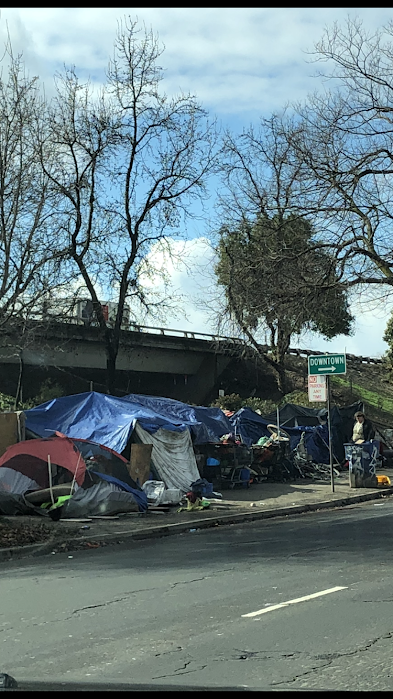
- ‘Impeach Trump’ is Back in Business - January 21, 2025
- California’s Professional Political Class Caused the State’s Demise - January 20, 2025
- Gavinomics: California’s High Cost of Living is Exploding - January 18, 2025


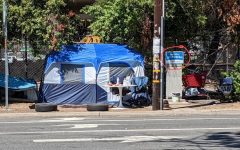
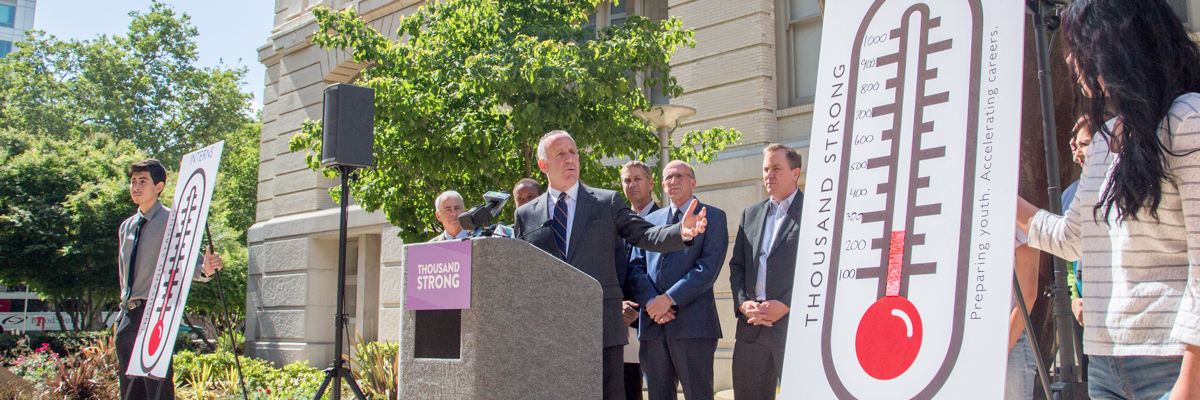
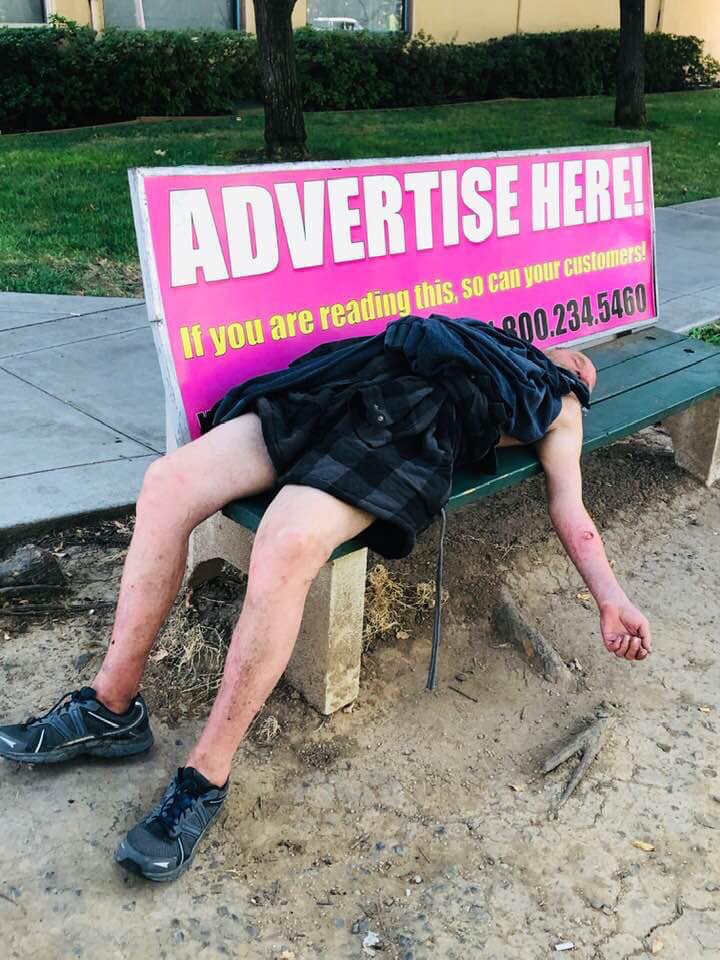
Woo Hoo, nothing spells success like 23% housed?
Just a few questions for the supervisors and Mayor:
What type of housing?
Permanent or temporary?
If permanent, where and what type, shared, hotel room, studio, tiny house(tough shed)?
How much did the safe city sponsored Shanty Town cost thus far?
What will the permanent housing cost the taxpayer?
Does the new housing allow the homeless to continue drug use and untreated mental health issues to continue?
Will job placement be part of the program?
Lastly do these city leaders think this is a viable, sustainable solution?
I guess time will tell but history has shown the odds are not good.
Hey Sacramento leaders address the real issues first!
Listen to your social workers that are in the trenches with little to no resources to get most of the unhoused proper drug treatment and behavioral health resources.
Cordoning off sections of the sidewalks and streets with a porty-potty is not a solution or a measure of success!
Kalifornia is a leftist success story only eclipsed by their ultimate success stories, Venezuela and North Korea.
Homeless Industrial Complex — Edward Ring
Search for it here at California Globe.